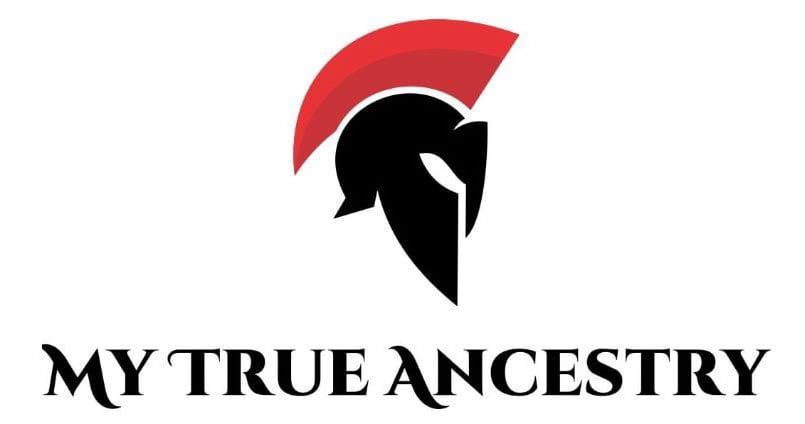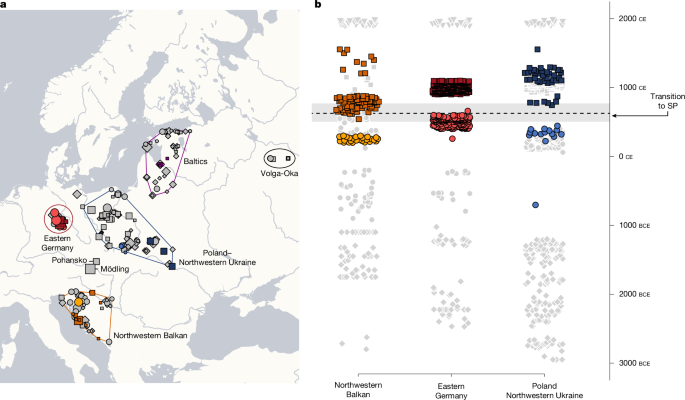le: Unraveling History through Ancient DNA: Slavic Populations in Central and Eastern Europe





Migration and the Rise of the Slavs in Central and Eastern Europe
The transition of Eastern Europe from the Roman period to the Early Middle Ages, around the sixth to eighth centuries, was marked by significant cultural and demographic changes. This fascinating historical era is closely associated with the emergence and spread of the Slavic peoples, which dramatically altered the genetic and cultural landscape of the region. The second half of the first millennium witnessed a monumental cultural revolution in Central and Eastern Europe, as evidenced by recent genetic findings and archaeological discoveries that reveal the complex processes of migration, integration, and social transformation.
In the quest to understand this transformation, researchers have conducted groundbreaking studies analyzing the genomes of ancient remains. The examination of DNA from 555 ancient individuals, including 359 from sites significant to Slavic history, reveals a sweeping replacement of over 80% of the local population's genetic material in areas such as Eastern Germany, Poland, and Croatia. This dramatic shift suggests widespread migration from Eastern Europe during this period, fundamentally altering the demographic composition of Central and Eastern European regions.
The meticulous excavation of sites across 26 locations has provided a time-capsule of information into the Slavic expansion. Genetic analysis from current-day regions of Belarus and Ukraine links them as ancestral homelands for the incoming populations. Through genome-wide data analysis, researchers have uncovered compelling evidence of shared ancestry across sites, suggesting a unified migratory origin rather than mere cultural assimilation. This genetic exchange left a mosaic of interweaving identities, forming the backbone of what would evolve into the largest linguistic group in Europe today.
Advances in archaeogenetics have made it possible to trace our DNA back thousands of years, linking us to cultures long lost to time. You can see where your lineage fits in this vast human map at MyTrueAncestry.com.
A number of archaeological sites across Central Europe serve as windows into this transformative past. The focal points of research include the Elbe-Saale region in Eastern Germany, the Northwestern Balkans, and Poland-Northwestern Ukraine. In Eastern Germany's Elbe-Saale region, the genetic changes unearthed align with evolving social structures observable in these ancient societies. Excavations reveal pit houses and simple cremation burials, hallmarks of early Slavic settlement that replaced the more elaborate Germanic and Roman traditions.
Archaeological discoveries show that as the Slavic period began, grave fields and the objects within, such as handmade pottery, weapons, and modest homes, reflect a simplified way of life compared to past inhabitants. Grave goods, or sometimes the lack thereof, offer crucial clues about the cultural practices and status of these groups. Artifacts unearthed from graves played a pivotal role in understanding the social complexities of ancient communities, though interestingly, the presence of specific grave goods such as weapons or brooches did not significantly correlate with genetic heritage, suggesting extensive cultural assimilation.
Even within this broad genetic narrative, individual stories emerge from archaeological evidence. Sites like Niederwünsch and Steuden offer exquisite insight into community structures, with kinships painstakingly revealed through genetic analysis. These locations illustrate how familial connections were maintained through time, with extensive pedigrees revealing new social models. The kinship networks show intricate patterns of patrilocality and suggest vibrant community interactions where individuals were closely related, yet deliberately avoiding close consanguinity.
Behind the seeming simplicity of Slavic material culture lay complex social structures. Studies of remains showcase tightly-knit kinships, organized patrilocally, forming large, extended family networks. These insights challenge the notion of an abrupt cultural invasion; rather, they paint a nuanced picture of gradual assimilation and community integration. The genetic legacies hint at a tale of integration and cooperation, as Slavic newcomers intermarried with existing populations without significant gender bias, painting a picture of complex societal changes and cultural fusion.
The findings from these genetic analyses do not depict isolated events but rather interconnect with a greater European narrative. As the Western Roman Empire dissolved, new power dynamics emerged, providing fertile ground for the expansion of Slavic groups. From Constantinople to the Carpathian Basin, these groups replaced Roman and Germanic structures with their distinct ways of life, setting the stage for the development of what would become diverse Slavic cultures across the continent.
The term "Slavs" first emerged in historical records from Constantinople in the sixth century. These newcomers, who arrived after the fall of the Western Roman Empire, introduced Slavic languages across Eastern and Central Europe, eventually leading to their status as the largest linguistic group in the region. The exact geographical origin remains debated among scholars, with some pinpointing areas northeast of the Carpathians, closely aligned with where early Slavic cultures have been historically documented.

Discover how your DNA connects to ancient civilizations at www.mytrueancestry.com.
Comments